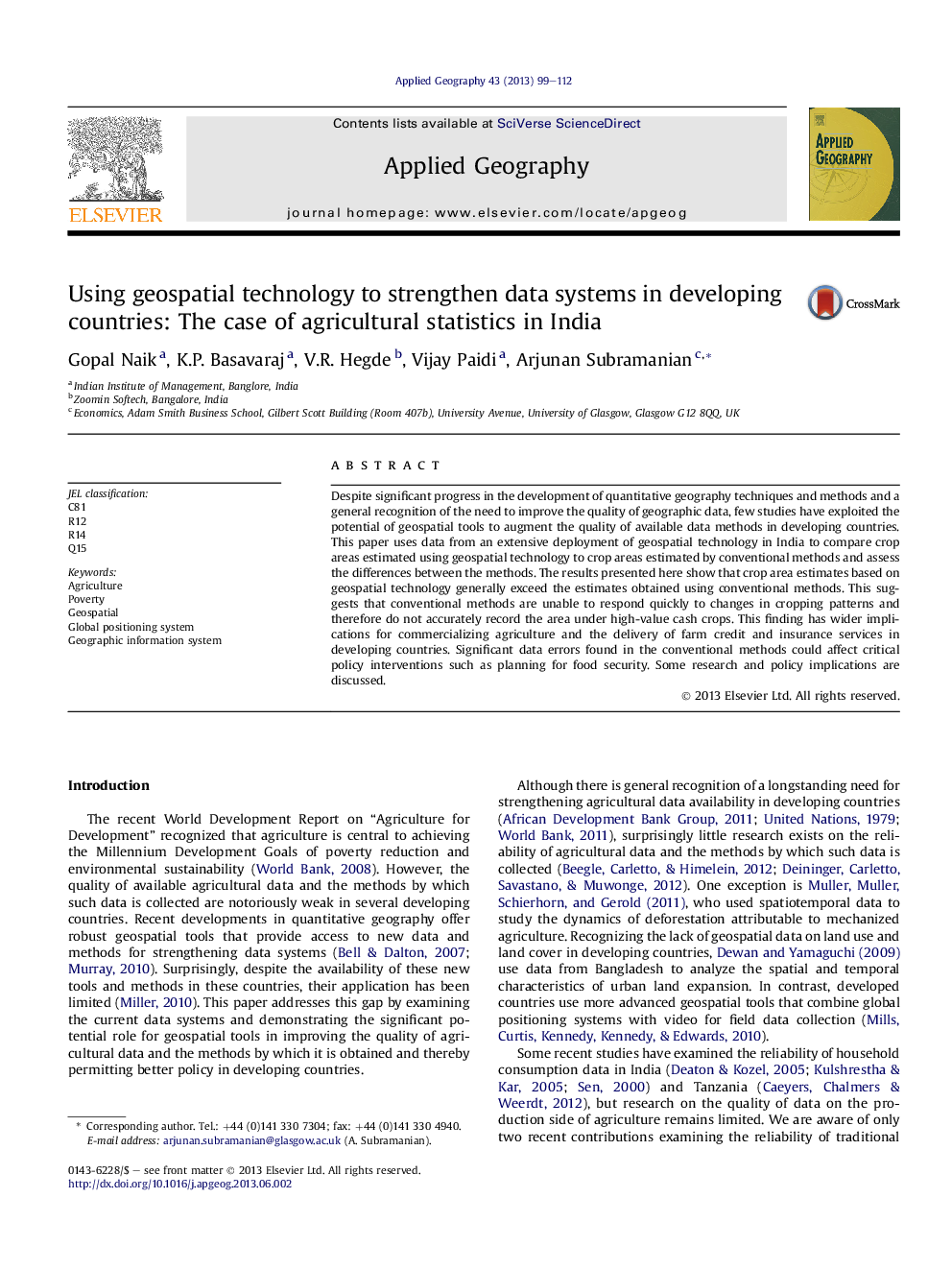| Article ID | Journal | Published Year | Pages | File Type |
|---|---|---|---|---|
| 6538857 | Applied Geography | 2013 | 14 Pages |
Abstract
Despite significant progress in the development of quantitative geography techniques and methods and a general recognition of the need to improve the quality of geographic data, few studies have exploited the potential of geospatial tools to augment the quality of available data methods in developing countries. This paper uses data from an extensive deployment of geospatial technology in India to compare crop areas estimated using geospatial technology to crop areas estimated by conventional methods and assess the differences between the methods. The results presented here show that crop area estimates based on geospatial technology generally exceed the estimates obtained using conventional methods. This suggests that conventional methods are unable to respond quickly to changes in cropping patterns and therefore do not accurately record the area under high-value cash crops. This finding has wider implications for commercializing agriculture and the delivery of farm credit and insurance services in developing countries. Significant data errors found in the conventional methods could affect critical policy interventions such as planning for food security. Some research and policy implications are discussed.
Keywords
Related Topics
Life Sciences
Agricultural and Biological Sciences
Forestry
Authors
Gopal Naik, K.P. Basavaraj, V.R. Hegde, Vijay Paidi, Arjunan Subramanian,
